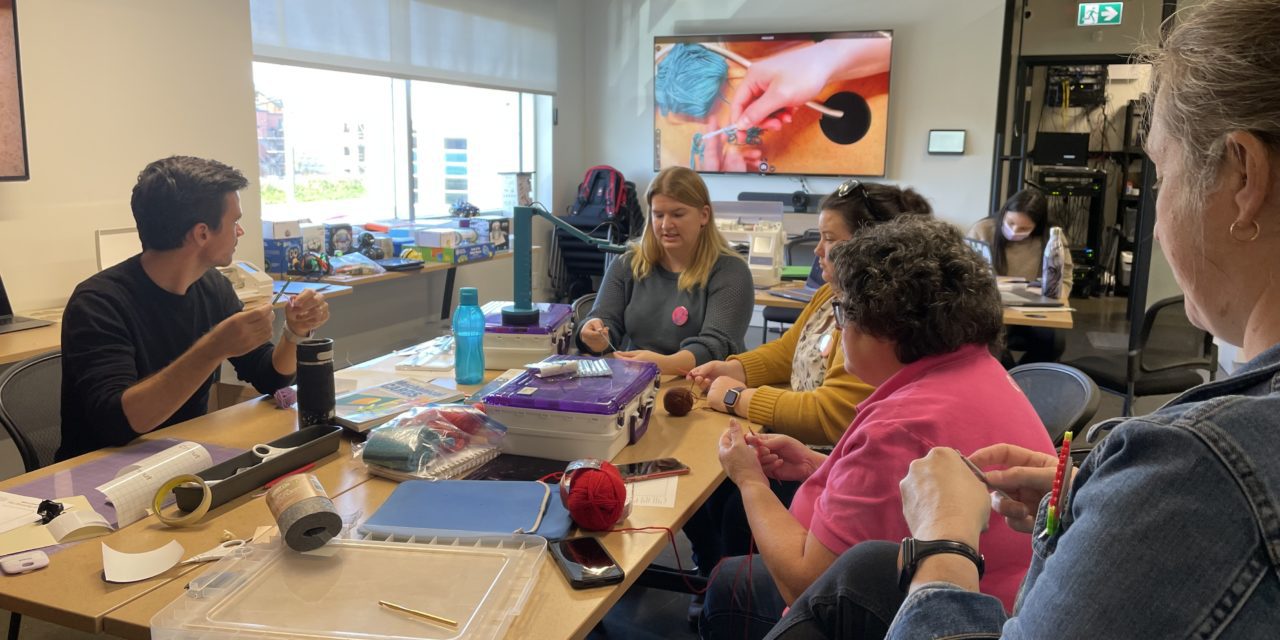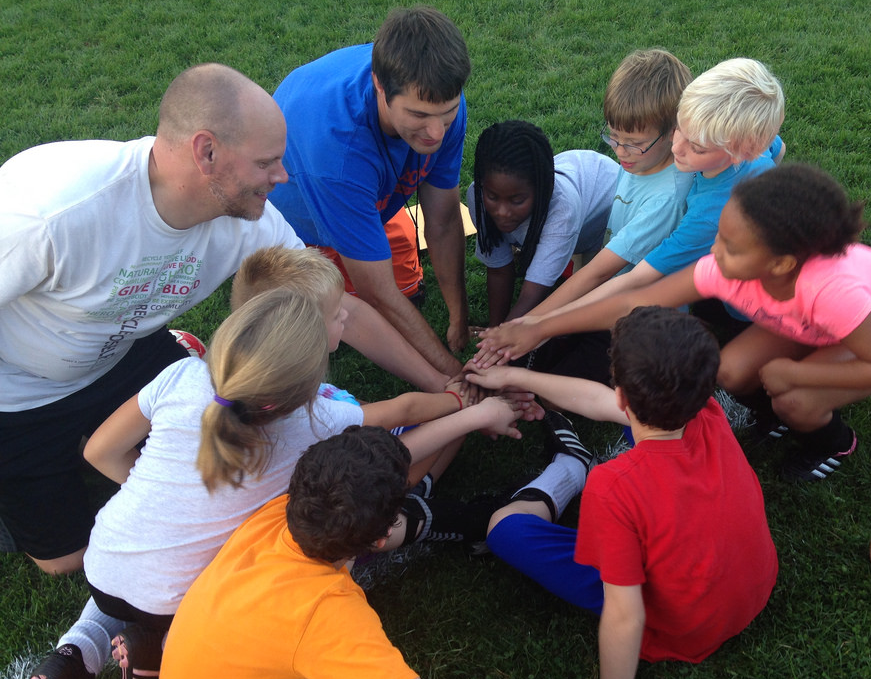We officially launched our first Open Creative Space (OCS) day of the new school year when we welcomed participants at our new LEARN office. Around the new training room participants were welcome to visit different stations to work hands-on with various high, low, and no-tech materials ranging from assorted robots and die-cutting machines to pipe cleaners, paper, and markers. Among the boxes of robots and other popular hardware, a handful of simple crochet hooks and yarn ended up occupying a large portion of our day.
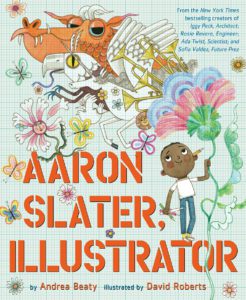 We started off the morning with a read aloud of the book, Aaron Slater, Illustrator. This tells an empowering story of a young boy who struggles with letters and finds the best way for him to communicate is through his drawings.
We started off the morning with a read aloud of the book, Aaron Slater, Illustrator. This tells an empowering story of a young boy who struggles with letters and finds the best way for him to communicate is through his drawings.
Next, we all dove in to begin exploring the buffet of materials and technologies spread throughout the room. While some individuals began tinkering with littleBits or Makey Makey, others created circuits on paper and fabric. Still, others chose to explore the handful of die-cut machines.

Working on Turtle Stitch
I explored Turtle Stitch and our embroidery machine alongside one of the participants. Having only started experimenting with the Turtle Stitch website and machine the day before, I still had a lot to learn. Our exploration of these two technologies included many moments of “I don’t know” and “let’s try it and see”. Turtle Stitch is a fantastic way to connect technology, math, and coding, with art; using the drag-and-drop block coding of Turtle Stitch, you are able to create intricate embroidered designs with the machine. Midway through the morning, with an embroidery project completed, I was drawn to the other side of the room where a group was assembling to try their hands at crochet.
I taught myself to crochet several years ago by watching and following along with YouTube videos. Since then, I have created blankets, bags, amigurumi (small stuffed creatures), a cardigan, an egg apron, and multiple WIPs (work-in-progress).
When I started out, I would pause the videos when necessary or rewatch the same few seconds again and again so that I could adequately see what was happening. At some point, I was able to apply what I had learned from the videos to reading and creating from written patterns. It helped that these patterns often included glossaries of terms, image examples, and explanations of special stitches or exceptions. When I came upon something I did not understand, I could return to YouTube and research the part that was causing me trouble.
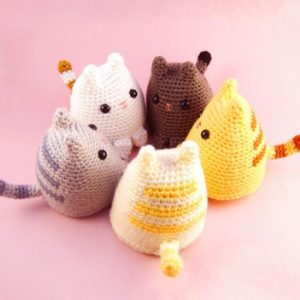
Amigurumi
Using the knowledge and skills I had taught myself, and alongside my colleague Carolyn Buteau, I assisted several others at our OCS day in creating a foundation chain and their first row of single or double crochet stitches. Having previously taught elementary students to crochet, I found it interesting to observe the idiosyncratic tendencies that beginner children and adults alike chose to employ. As the room filled with the repetitive instructions of “insert the hook” and “yarn over,” some individuals joked they would hear “yarn over” in their sleep.
During our wrap-up discussion at the end of the day, several of us commented on how despite the variety of high-tech tools, we gravitated towards such a low-tech activity like crochet. That said, our discussion highlighted several interesting and significant ideas about the connections between crochet and computational thinking and how it relates to learning and teaching in a more general sense.
For anyone with crochet or knitting experience, they know that the patterns are typically a series of instructions written with numbers, abbreviations, and a few words. To anyone unfamiliar with the craft, these patterns are incomprehensible until you learn the code.
Most crochet patterns include codes like ch, sl st, sc, hdc, blo, tog which mean chain, slip stitch, single crochet, half double crochet, back loop only, and together respectively. Sometimes these codes can be combined to form more complicated stitches, so ‘sc2tog’ means ‘single crochet 2 together’.
Several individuals have already written about how crochet and code are similar:
A crochet pattern is written out so that the crocheter knows which stitches to make, how many to make, and where to make them. A program is lines of code compiled to tell the machine what to do, how many times, and when. In both cases, it’s a set of instructions to be executed in a particular order (Bernard, 2018).
A crochet pattern describes a series of steps to create an object made of stitches. Patterns sometimes use repetition and custom stitch notations for more complicated patterns. In that way, they remind me of loops and macros in programs (McCarty, 2017).
Crochet (and knitting) patterns are written using a standard notation that describes the precise steps that need to be taken in order to produce a particular design. In a similar manner, computer programs are written using a standard notation that describes the precise steps that a computer needs to follow in order to solve a problem. Many of the familiar programming constructs can be found in crochet patterns (Hadwen-Bennett, 2020).
Students could take a pattern for knitting socks and recreate it as “pseudocode or even create the code in Scratch” as seen in this ‘Sock-Knitting: A case in point’ example (Grover,2021).
 The ability to read code or follow an algorithm is more pervasive in our lives than one might initially think. Most problems or tasks can be solved with a set of instructions that are written in the jargon specific to the type of activity being performed. Math and computer science might be the obvious choice as they are the subjects in which we normally use algorithms such as the algorithm for long division. While crochet or knitting don’t necessarily explicitly teach math content, the skills to follow a pattern can be transferred to the ability to follow the algorithm for long division or to solve for x. Expanding this thinking, we can apply computational thinking to different subjects.
The ability to read code or follow an algorithm is more pervasive in our lives than one might initially think. Most problems or tasks can be solved with a set of instructions that are written in the jargon specific to the type of activity being performed. Math and computer science might be the obvious choice as they are the subjects in which we normally use algorithms such as the algorithm for long division. While crochet or knitting don’t necessarily explicitly teach math content, the skills to follow a pattern can be transferred to the ability to follow the algorithm for long division or to solve for x. Expanding this thinking, we can apply computational thinking to different subjects.
In this sense, writing an essay can be reduced to a series of steps that involve following routines and subroutines. If we were to write an algorithm for the 5 paragraph essay like a crochet pattern it might look something like this:
Th: thesis statement
TW: transition word
TS: topic statement
CS: Concluding statement
S: sentenceParagraph 1: Write an opening statement. Write general information about the subject. Insert a Th.
Paragraph 2: [TW. TS. Write 3 S with evidence to support your TS. CS.]
Paragraphs 3-4: Repeat [ ]
Paragraph 5: TW. Reword Th. Insert final thoughts.
While we do not normally write them out like this, translating tasks or problems to algorithms can help provide another way to understand the required steps for a variety of activities. Being able to read and follow an algorithm, pattern, or set of instructions is something we do in our daily lives no matter if we realize it or not. Whether it is following a crochet pattern, baking a cake using a recipe, or putting together a piece of Ikea furniture, computational thinking is a skill that pervades our everyday lives. Making these links for students can help them to develop their own abilities while also helping them to complete tasks in a logical way.
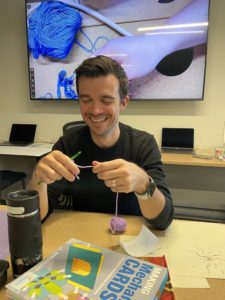 So thinking like a computer programmer or mathematician can be beneficial in multiple subject areas and being able to apply computational thinking to a problem no matter the subject can help individuals find solutions. But computational thinking doesn’t need to be developed only in computer and math classes. By thinking outside of the box, we can leverage the presence of algorithms in our daily lives to develop these skills in many different ways.
So thinking like a computer programmer or mathematician can be beneficial in multiple subject areas and being able to apply computational thinking to a problem no matter the subject can help individuals find solutions. But computational thinking doesn’t need to be developed only in computer and math classes. By thinking outside of the box, we can leverage the presence of algorithms in our daily lives to develop these skills in many different ways.
Returning to crochet briefly, with the fundamental skills acquired, one can begin to create original pieces rather than relying on following the patterns created by others. This requires another level of creativity and computational thinking. Finally, sharing this creation with others by creating a pattern necessitates even deeper critical thinking to translate the physical creation into written instructions that can be understood by other users.
One of the other ideas that came out of our wrap-up discussion was to encourage risk-taking. As educators, we want to encourage our students to think outside the box but we also have a responsibility to model creative risk-taking. For adults, this is a lot easier when using low-tech and low-cost materials since we have less worry about breaking something or wasting pricey supplies. Here again, crochet provides an interesting example. Crochet hooks are inexpensive tools and it is quite easy to get yarn donations from the community. For those who are afraid of all things tech and the word coding brings up images of mastermind hackers, crochet and knitting can be roads that bridge the gap between the familiar and the strange or scary.
In this way, technology skills and computational thinking can be taught without the technology or even much technologic knowledge. It doesn’t have to be crochet or knitting; algorithms are everywhere. Drawing attention to their ubiquitous presence in our lives can be helpful in developing skills that will serve our students’ long term.
References
Bernard, M. (2018, July 16). Crochet, code, craft. Mercedes Bernard. https://mercedesbernard.com/blog/crochet-code-craft
Grover, S. (2021, April 17). Craft, culture, and code: K1p1, p2tog; *dc 2, sl st, dc in next st; rep from * to end. Shuchi Grover, Ph.D. https://www.shuchigrover.com/craft-culture-and-code/
Hadwen-Bennett, A. (2020, December 29). Programming in crochet. Physical Computing and Maker Education. http://physicalcomputing.co.uk/2020/12/29/programming-in-crochet/
McCarty, K. (2017, October 19). Modeling crochet as a programmer. Medium. https://medium.com/@kimberly_mc/modeling-crochet-as-a-programmer-64e9a79b8061

